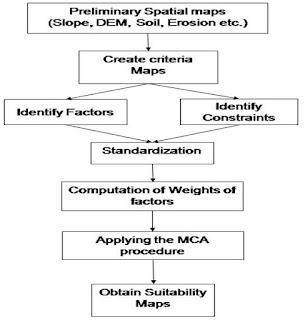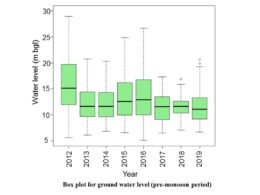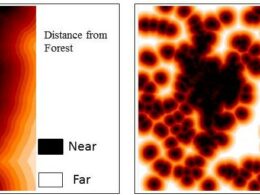Land Suitability and Priority Analysis
STEPS for Multi Criteria Analysis using GIS and Remote Sensing:
- In MCA, an attempt is made to combine a set of criteria for decision making.
- The MCA method is based on a weighted linear combination it include both weighted factors and constraints.
- In weighted linear combinations, factors are combined by applying a weight and multiplying the suitability calculated from the factors by the product of the constraints.
- Suitability or priority levels for each factor used as a base to construct the criteria maps (one for each factor).
- The levels can be defined as very high suitability (5) to very low suitability (1).
- Before calculating the weights for factors, it is also important to standardize all factors on a common scale of measurement to facilitate analysis, using a fuzzy set theory.



Very nicely written article. In next update you may include case study to demonstrate the methodology.